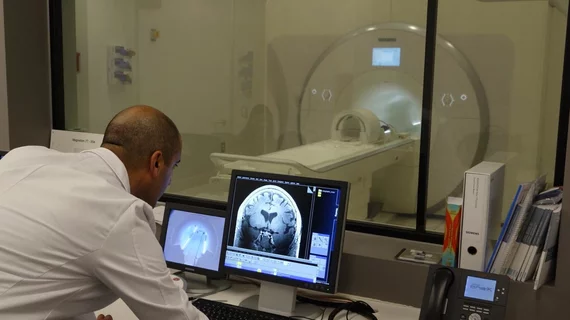Top MRI trends include helium-free systems, compressed sensing and AI
Magnetic resonance imaging (MRI) is seeing wider use based on rising demand for higher quality advanced imaging, and the development of new technologies are making it easier to use while also reducing exam times.
As we head into the Radiological Society of North America 2022 meeting, Health Imaging discussed some trends in the MRI market with Bhvita Jani, research manager at Signify Research. She outlines several key technologies and explained some of the influences on the MRI market Signify has seen since 2019.
MRI is expected to see expansion over the next few years
Signify expects MRI systems to see an annual growth rate in MRI of 47% annually. She said part of this was due to pent up demand because of the pandemic halting many hospital capital equipment replacements during COVID. Signify saw a sizable number of sales of new MRI systems in 2021 as a result. Jani said she is also seeing wider adoption of MRI in emerging markets seeking to expand access to the technology. This includes not only growth in out-patient facilities, but also in rural areas and developing countries.
Small markets for very-low field MRI systems and very high MRI systems, like 7 Tesla, are seeing growth, but these market segments are still at this point very small, Jani said. There is still a concentration in purchasing of 1.5T and 3T systems. "We are seeing a gradual transition toward 3T systems," she added.
New MRI technologies may also drive additional MRI system sales. This includes new, small, portable MRI systems, the introduction of "helium free" sealed cooling systems, weight-bearing MRI systems, and artificial intelligence (AI) and other automation features to make operation of the MRI easier to use and to greatly reduce exam times.
Compressed sensing and AI are making MRI systems more efficient
"Software improvements have increased considerably for MRI," Jani explained. "We are seeing compressed sensing, which allows for faster scanning, shortening scanning appointments and one-beat cardiac MRI scanning."
In many cases, compressed sensing, sometimes combined with AI, can help reduce exam times but 50% or more.
Artificial intelligence is also being integrated into MRI systems and post-processing software. AI is being used in a variety of applications, from improving image reconstruction for clearer images to assisting with operations workflows, ensuring proper patient positioning, and subspecialty specific applications in cardiology, neurology and orthopedics to speed workflows and automate measurements and quantification.
Jani said software to reduce scan times and increase the amount of clinical data that can be pulled out of these shorter exams may play a role in purchasing decisions, because hospitals want to maximize their investments in imaging equipment by being able to scan as many patients as possible on them, without sacrificing quality or patient outcomes.
"There is increased focus on return on investment. So, as more decisions are being driven by financial decision makers, we are seeing more consideration of the full return on investment on the full shelf life of the system. If there is more patient foot-fall because of more efficiency of the systems, that can be a factor that differentiates one company's MRI system from another," Jani explained.
Helium-free MRI systems can lower costs of ownership and simplify installation
Over the past few years at RSNA, several vendors have introduced so-called "helium-free" MR systems. They still use helium as a cryogenic coolant for the magnets, just a lot less helium than what is normally used. Helium is in short supply, so it is expensive. Jani said the supply has been further disrupted with the Russian-Ukraine war.
The helium-free systems have three important differences from traditional MRI systems:
1. Very low amounts of helium are used. Philips states its helium-free system only uses 7 liters of helium, as opposed to 1,500 for a standard MRI system.
2. The helium system is completely sealed, so there is no boil off of helium over time. This prevents costly recharges of the helium system.
3. No vent or quench stack is required for these sealed, low-helium systems. This can significantly reduce costs of stack installation and allows MRI rooms to be located anywhere, without the need to consider how to vent the system outside the building.
"Helium-free systems are a long-term goal," Jani explained. "The ability to provide high-strength MRI fields without the need for the super cooling by liquid helium should lower the costs for these systems and be a more sustainable and cost-efficient option for MRI devices."
While there are a few commercialized helium-free systems on the market, she said they cost more than traditional systems, which she says limits their full potential for adoption. This is especially true in developing countries, where upfront costs are a primary driver for adoption. Signify expects to see these systems being adopted largely in outpatient facilities in developed countries. Jani said they do not expect to see helium-free systems significantly disrupt the market until the costs come down substantially.
New vendors in the MRI market
Two vendors that have made strides to try and earn more market share in MR systems include Samsung and Chinese-based United Imaging. In recent years leading up to the pandemic, both companies had massive booths at RSNA in attempts to draw in new customers. Both showed systems with several features that appeared to be comparable to the more main stream MRI vendors.
"United Imaging is more and more of a threat to some of the more established vendors, but the impact outside of China is still quite limited. This is because when buying MRI systems in developed markets, brand loyalty is still quite strong," Jani said.
Signify Research estimates United Imaging's market share in Asia is about 8% and their global market share is about 4%, so we are still seeing Siemens, GE, Philips and Canon being the market leaders.

